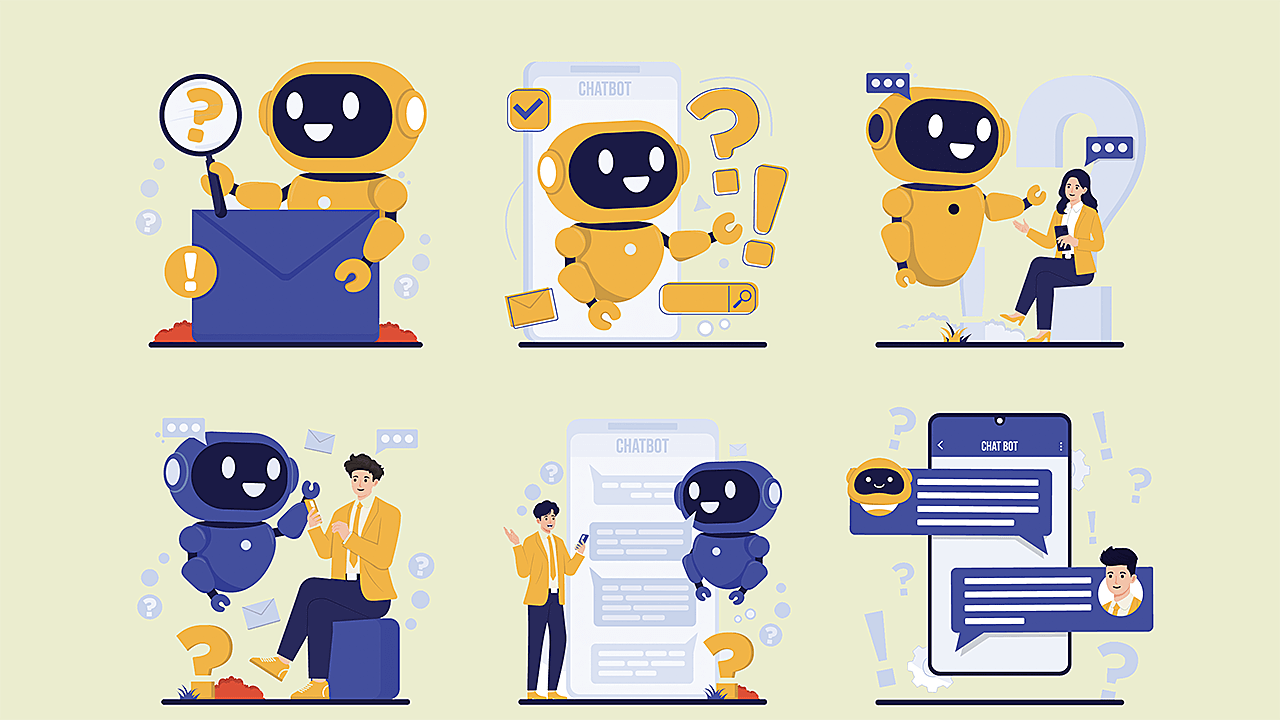By Dario Esposito,Michael Berthold
Copyright thenewstack

AI agents are changing the way you work, influencing everything from automated customer interactions to intelligent decision-making in industries like finance, healthcare, retail and more. These autonomous systems are no longer just an experimental technology; they are becoming an essential part of enterprise operations. Unlike traditional applications that follow static, deterministic rules, AI agents continuously learn and adapt, making them more powerful, but also requiring a different approach to management.
You might already be using AI-powered virtual assistants to handle customer queries and for trading crypto, or optimizing supply chains with intelligent agents. These systems come in different forms: reactive, deliberative, hybrid, learning-based, collaborative or fully autonomous. Each one is designed to handle specific tasks.
At their core, AI agents follow a continuous cycle: They gather data, analyze it with machine learning (ML) models, make decisions based on patterns and execute actions, constantly improving over time. This ability to adapt sets them apart from traditional software, which remains static unless manually updated.
Inevitably, implementing AI agents also means adding an additional layer of complexity to the software development paradigm, which could be best addressed and managed by using a comprehensive, holistic foundation such as a developer platform.
What Is an AI Agent?
Broadly speaking, an AI agent could be referred to as an application or software that continuously strives to pursue an objective by operating specific tasks. Agents feature autonomy and proactiveness, since they can reason and perform actions either by following explicit instructions or not. As long as a clearly defined objective is set, the agent will use context and available tools to achieve its ultimate aim.
Compared to traditional software, where specific outputs follow certain inputs in a causal fashion, AI agents are empowered by language models, tools, orchestrators and contextual sources to produce tailored, valuable results, which, among all the benefits, align much better with business objectives. Continuous learning, adaptation and improvement are the components that shape and drive agents’ behavior over time.
Types and Use Cases of AI Agents
AI agents are highly specialized programs. Despite their adaptability, they are designed to handle specific tasks and come, therefore, with different shapes. Depending on their behavior, they fall into some macrocategories:
Reactive: They respond instantly to inputs and have little to no memory for future use.
Deliberative: Mostly used for complex tasks, they perform by means of deep reasoning and accurate planning.
Learning: They use past interactions and ML to readjust their answers.
Hybrid: These balanced agents share different layers to address a larger scope.
Besides the type, it is worth considering that there are hundreds of situations where agents can operate in the real world. Popular use cases include AI companions for customer support or assistance, self-driving vehicles, trading bots for financial market predictions, home automation control systems and diagnostic tools for patient care and healthcare.
How Do AI Agents Work?
AI agents are not just standalone models; they consist of multiple components that better describe their behavior and whose combination frames a cognitive architecture.
Let’s dive deeper into the cognitive architecture framework. It usually comprises:
Models: Specific language models used by the agents. They could be of any type and follow any logic, but should be tuned on specific needs, data and architectural tools.
Tools: Extensions, functions, data stores and so on. They act as a bridge between the underlying model and the outside world, enabling agents to access and process real-world information and fulfill diverse tasks.
Orchestration layer: Foundational level that drives agents’ behavior with loops of varying degrees of complexity, from simple decisions to heavy-reasoned chained logics. This process keeps going until the agent has achieved its primary goal or has reached an end point.
In simple terms, this is a brief cycle of how an AI agent performs on a customer-related task:
Information intake: The AI agent receives a customer request, such as a question via an AI companion. It analyzes the input using natural language processing (NLP) to understand the customer’s needs, then accesses relevant data and contextualized knowledge.
Planning: After grasping the request, the AI agent formulates a plan to respond or complete the task. Planning entails identifying relevant information or actions based on the customer’s intent. In a more complex task, the agent might chain prompts or models together.
Executing: This phase involves generating a response to the customer’s question, initiating a workflow or interacting with other systems via APIs. For instance, an AI RAG chat application uses a knowledge base (specific sources) to provide useful, valuable answers.
Adjusting: The AI agent’s performance is evaluated. Evaluation could be done through explicit customer feedback or implicit monitoring of outcomes (such as resolution time or task success). Based on the result, the AI agent or the underlying system can be adjusted by fine-tuning the model, updating the knowledge base or refining the prompting strategies to improve future performance.
Why AI Agents Are Taking Over
The adoption of AI agents is accelerating, driven by advancements in computing power, access to massive data sets and improvements in ML. Organizations are integrating them to automate repetitive tasks, optimize decision-making and enhance user experiences.
The AI agent market is projected to grow from $5.1 billion in 2024 to $47.1 billion by 2030. Gartner predicts that by 2028, 33% of enterprise software applications will include AI agents, while AI-powered agents will replace 20% of human interactions at digital storefronts and autonomously handle 15% of daily business decisions.
However, as AI agents become more capable, they also introduce new challenges. Unlike traditional applications, they evolve, learning from new data and adapting their behavior. This introduces risks like model drift, automation failures and governance issues, making it essential to think beyond just deployment.
What Is the AI Agent Life Cycle?
The AI agent life cycle covers every stage of an AI agent’s journey, from its initial development and training through deployment and daily management, all the way to governance and eventual retirement (if necessary). When you understand this life cycle, you gain a big-picture view of how AI agents evolve, how they integrate with your existing systems, and how they affect the way you deliver services or make decisions.
Managing the AI agent life cycle means paying attention to three main areas: full life cycle management, integration with cloud native development and change management. Each area makes sure your AI agents stay aligned with your goals and continue providing real value over time.
Full Life Cycle Management
Managing AI agents’ life cycles is not a one-off process. It requires a comprehensive approach that includes their creation, orchestration, and evolution. AI agents are not just standalone models; they consist of multiple components that better describe their behavior and whose combination frames a cognitive architecture.
AI agents operate by means of interconnected components, so their life cycle extends far beyond model development and deployment. This involves continuously monitoring their performance, updating their reasoning frameworks, optimizing their interactions with internal databases and adapting to new external tools. Without a structured life cycle management approach, AI agents risk becoming obsolete, unreliable or misaligned with business goals.
On the whole, an AI agent is likely to go through a series of phases:
Ideation and problem definition: Define the problem, extent, goals and potential return on investment.
Data handling: Gather, assess, clean and process the data. Prepare the data for AI consumption with proper alignment, qualification and governance.
Design and development: Design the agent’s architecture and develop the model accordingly.
Ethical and security considerations: Integrate ethics and security best practices.
Testing and evaluation: Test and evaluate the agent’s performance.
Deployment: Deploy the agent into the production environment.
Monitoring and optimization (AgentOps): Continuously monitor, optimize and manage the agent’s performance and behavior in a production setting. Readjust and refine the agent’s behavior in accordance with metrics and feedback loops.
Providing context and setting boundaries across all the stages of agents’ life cycle allows you to get bespoke results while keeping the AI unbiased, and ensures that the agents operate within a precise scope.
Integration With Cloud Native Development
To keep AI agents adaptable and efficient, you need an infrastructure that supports continuous updates, scalability and seamless integration with other services. Traditional architectures can be rigid, making maintenance difficult. Cloud native approaches like microservices and containerization provide dramatically higher flexibility, enabling seamless scaling, data integration and real-time decision-making.
Cloud platforms also support strong DevOps practices like CI/CD, enabling AI agents to receive regular updates and refinements without major redevelopment efforts. These platforms also support scalability, security and compliance while reducing operational complexity and ensuring reliable and efficient AI performance.
Change Management
Bringing AI agents into your workflow isn’t just about technology. It’s about people. When AI starts handling tasks and decisions, roles shift and resistance can arise. Managing this change is just as important as deploying the AI itself.
To make the transition smooth, you need a clear strategy. Communicate how AI will enhance work, not replace jobs. Address concerns head-on and provide training to help teams adapt. When employees understand how AI improves efficiency and decision-making, they’re more likely to embrace it.
AI agents don’t just follow static rules; they adapt and learn over time. This changes how tasks are performed and how decisions are made. In customer service, AI can handle routine queries and escalate complex ones, improving response times. In finance, AI detects fraud and manages risk by analyzing transactions in real time.
AI isn’t just a tool you implement and forget. Its impact on workflows, decision-making and roles requires thoughtful, iterative management to drive real value.
Best Practices for Working With AI Agents
To properly harness AI agents, you need structured data, clear governance and a scalable platform. The following best practices help ensure AI agents remain reliable, adaptable and aligned with business goals.
Prepare AI-Ready Data
AI agents rely on high-quality, well-structured, well-prepared data to function effectively. You should implement active metadata management and data observability to track data quality while guaranteeing compliance with privacy regulations.
When it comes to data, it is also important to establish roles and responsibilities to manage data in support of AI. Managing AI agents requires defined responsibilities across different teams. Data stewards should oversee data integrity and accessibility, making sure that AI agents receive reliable inputs. AI engineers are responsible for training and optimizing ML models, while security teams enforce data protection policies and regulatory compliance.
Adopt an End-to-End (E2E) Solution: The Platform Approach
AI agents function best within a structured platform that integrates different aspects of development, deployment and management. An internal developer platform (IDP) may provide the essential structure to comprehensively manage an agent’s life cycle end-to-end (E2E). An E2E solution encompasses three key areas: platform engineering to provide a solid infrastructure, a streamlined DevX and embedded guardrails; composable applications for a smoother and easier orchestration of agents; and data management to make sure AI agents work with data that is aligned with use cases, constantly qualified and contextually governed.
Wrapping Up
AI agents are reshaping the way businesses operate, offering unprecedented efficiency, adaptability and decision-making capabilities. However, their success depends on more than just advanced algorithms; it requires structured life cycle management, cloud native integration and strong governance. Without these, organizations risk unreliable automation, data integrity issues and misaligned AI behavior.
As AI agents continue to grow, companies that embrace a comprehensive approach — one that balances innovation with control — will be best positioned to maximize their full potential.



